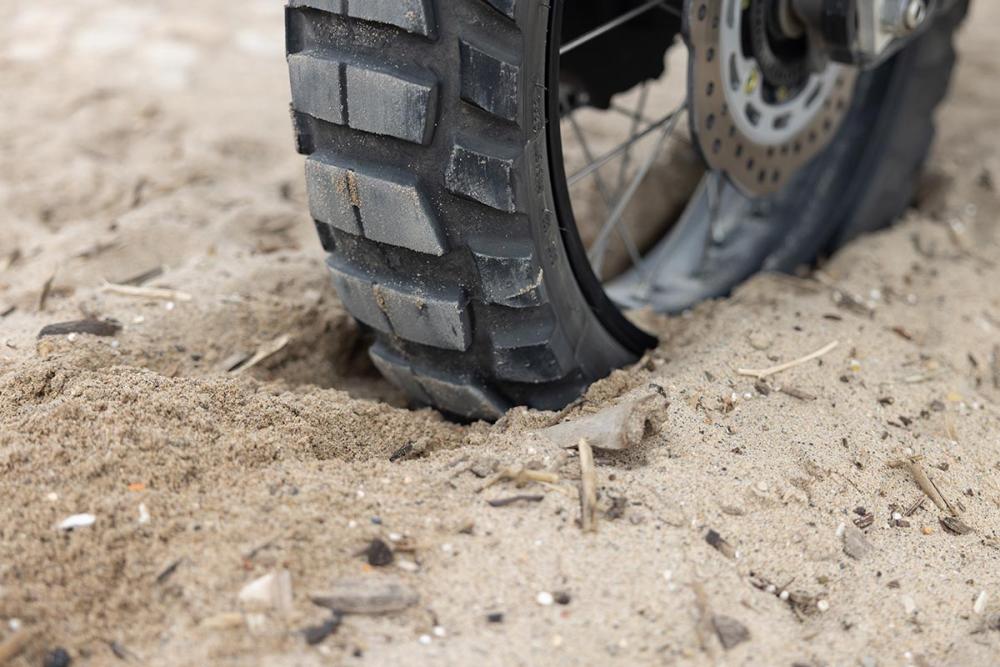Adventure-Bike tyre have to perform the demanding balancing act between on-road and off-road use. Along with the tire experts from Metzeler, who have worked closely with Touratech for the last 15 years, we take a look at tyre types and technology.
Text: Andreas Reimar, Photos: Metzeler and Touratech
The tyre creates the connection between the motorbike and the ground. That sounds harmless at first, but if you take a closer look, it's quite a tricky task. The tyre has to transmit driving forces, absorb braking forces, provide impressive grip even in a leaning position, and at the same time roll off as comfortably as possible, all while hopefully lasting as long as possible. While pure road or genuine off-road tyres have to achieve this feat in their respective narrowly defined areas of use, touring enduro tyres face additional challenges. They have to cut a good figure both on and off-road - with a different emphasis depending on the type of tyre.
But what exactly is an adventure bike tyre? First, there is the tyre diameter, determined by the manufacturer. For high-capacity and more road-orientated adventure bikes, the 19-inch front and 17-inch rear combination is the standard, while lighter models which are intended more for off-road use have a 21-inch front wheel, with an 18-inch or, more rarely, a 17-inch wheel at the rear. Of course, there is also a minimum of off-road suitability, although there are also pure road profiles especially for touring enduros. This also makes sense, as some travellers are simply on the road and love the high level of comfort of road tyres.
THE TYRE PROFILE
However, here we want to talk about those tyres which also guarantee security and riding enjoyment in off-road situations. What distinguishes those tyres, which are equally at home on Trails, roads and during high-speed rides on motorways? First of all, we must ne clear that despite significant improvements in the widening of the application spectrum, no tyre can come out on top in all disciplines. Therefore, a compromise is needed, which the manufacturers often show in percentage points. 70.30 thus means, that the manufacturer envisions his tyre 70% on road and 30% off road. But what are the underlying reasons for those suitability recommendations?
This leads us to the design of the tyre pattern. Basically, there is a distinction made between positive tyre pattern – the tread bar – and negative tyre pattern – the clearance. As a rule of thumb, the larger the share of the negative profile, the more suitable the tyre is for offroad use. The explanation is simple: The surface pressure of the relatively small tread bars is high so that they can penetrate or interlock with the ground. Soil material will hardly be retained in the large gaps as it is thrown out by the centrifugal force so that the tread does not clog. This is referred to as the tyre's ability to clean itself. On the other hand, it is clear that a tyre with a high proportion of negative tyre pattern has disadvantages on the road. The small contact area can only transmit lower acceleration, braking and lateral guidance forces than a tyre with a full tread surface - ideally a slick tyre - and is also subject to increased wear. Accordingly, manufacturers vary the proportions of positive and negative tread according to the intended focus of use and try to design a tread pattern that is optimised for the respective purpose in terms of traction, grip, lateral guidance, water displacement, self-cleaning and smooth running.
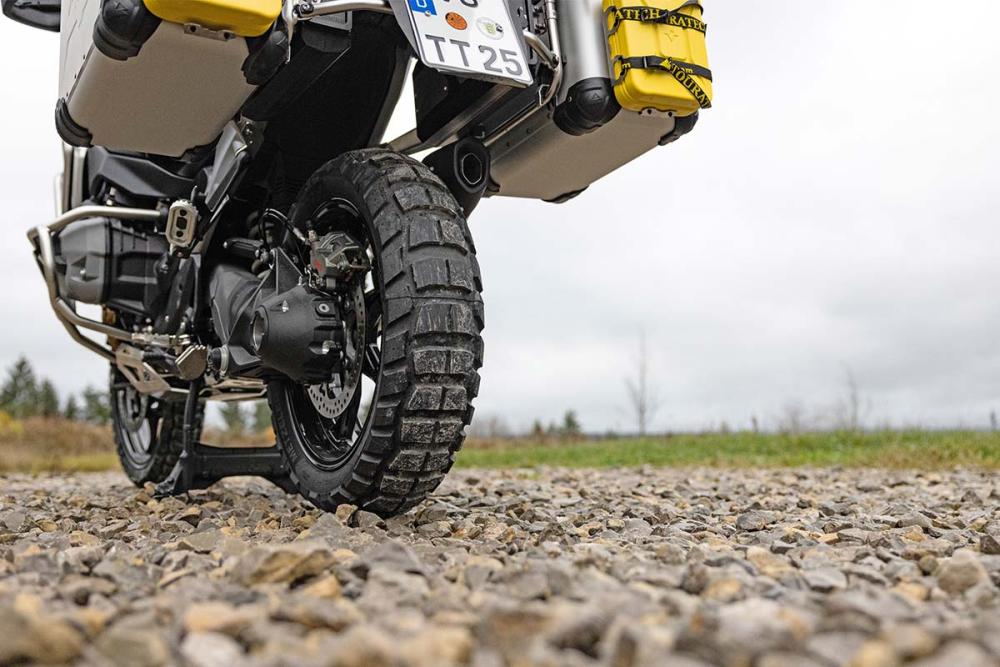
On loose terrain, Adventure Bike tyres are put to the test: The tyre pattern must interlock with the surface and clean itself.
THE MIXTURE MAKES THE DIFFERENCE
A functional tyre pattern, however, is in itself no guarantee for a good performance. The rubber mix is of central importance for tyre grip and durability. Caoutchouc is the basis for any rubber – be it natural caoutchouc or synthetically manufactured alternatives. After extensive processing, tyre manufacturers add all kinds of substances to the raw material to give the rubber the desired properties such as durability, tensile strength, abrasion and petrol resistance or elasticity. Incidentally, the rubber gets its black colour from the added grime, which is an important filler responsible for abrasion resistance and can account for up to 30 percent of the tyre weight. Another important additive is silica, also known as silicic acid. Silica causes the compound of rubber and carbon black to start "working" internally earlier by converting the energy supplied by rolling into heat. This is particularly important for road use, as a supple rubber compound can adapt better to the fine structure of the tarmac - which provides the decisive plus in grip, not least on cold or wet roads. And the good thing is that the reduced internal friction of the rubber also reduces rolling resistance. A modern motorbike tyre, whether for road or mixed use, does not consist of a single rubber compound. Manufacturers use different mixtures in different application areas in order to optimise the required characteristics. While the centre of the tyre is increasingly concerned with abrasion resistance, softer compounds are used on the sidewalls to optimise grip when leaning.
ADVENTURE-BIKE TYRES: ALLROUNDERS AND SPECIALISTS AT ONCE

To understand how a modern travel enduro tyre performs the balancing act between robust offroad use and sportive touring, we will take a detailed look at the example of the Metzeler Karoo 4 (see illustration).
The shovel-shaped central lugs ensure strong interlocking with the ground on soft surfaces. Wide tread gaps allow for effective self-cleaning. This is supported by the undulating course of the side grooves, i.e. the space between the centre and side lugs. The side lugs are offset from the centre lugs so that they form a catchment area that is responsible for lateral guidance. There are also generous cleaning areas between the side cleats to prevent clogging of the profile. Variable angles on the side walls of the lugs ensure the best possible contact between the tyre and the ground. The particularly rigid carcass of the Karoo 4 not only provides the necessary stability for high payloads, but also allows precise handling even with a sporty driving style on the road. Metzeler uses the term Cap&Base compound to describe a construction method in which two compounds are fitted on top of each other. In the Karoo 4, this is a resistant, hard rubber compound on a softer base compound. This gives the lugs additional adaptability to the surface without wearing out too quickly. The rear tyre also has a particularly high proportion of grime in the centre of the tread for high abrasion and cut resistance. The front tyre, on the other hand, has a rubber compound with a 20 percent silica content, which guarantees excellent wet grip on asphalt.
ADVICE ON TYRE TYPES: WHICH ONE FOR WHOM?
The by now enormous range of Adventure Bike tyres is on the one hand very welcome but can also cause confusion. Those looking for a new tyre for their travel enduro should consider a few points before purchasing.
The legal aspects
There is no tyre brand binding for EU type-approved motorbikes. That means, that all tyres can be used for these bikes as long as they fit the dimensions in the vehicle documents. You are on the safe side if you have service information from the tyre manufacturer. This confirms that the tyre has been tested on the motorbike in question by the manufacturer and that its use is recommended. The situation is more complicated for motorbikes that only have a general operating licence (German: Allgemeine Betriebserlaubnis, ABE) instead of EU type approval. These are usually older vehicles. If a tyre that is not listed in the documents is to be fitted here, registration is generally required. The basis for legalisation is a manufacturer's certificate in which the manufacturer confirms suitability for the bike in question. Whether EU type approval or ABE: tyres with dimensions that deviate from the figures in the vehicle documents must always be registered. As there is no legal entitlement to registration despite the existence of a manufacturer's certificate, you should have a clarifying discussion with the gentlemen in the grey overalls before buying tyres. If the tyre has a speed index below the one given in the motorbike documents, it may still be driven - provided that all other requirements are met - as long as it has an M+S marking on the tyre sidewall. In addition, a sticker must be affixed in the rider's field of vision with the maximum permitted speed of the tyre, which may not be exceeded. Again, this only applies to motorbikes with EU type approval. For all other bikes, the only option is to go to the test centre.
Detailed information can be found on the Federal Ministry of Transport’s website at http://bit.ly/reifeneintragung
The spectrum of application
Once the legal aspects have been cleared up, the question of the main type of use arises. Adventure Bike tyres are designed to perform well both on tarmac and on gravel tracks. Yet, different tyres are designed with different emphases on use which noticeably affects their performance. For examples, see below.
Examples for choosing tyres
If you mainly ride onroad, a tyre with the lowest possible share of negative tyre pattern is to be recommended. The grip on tarmac is optimal thanks to the large contact area, rolling comfort and durability are similar to those of a road tyre.
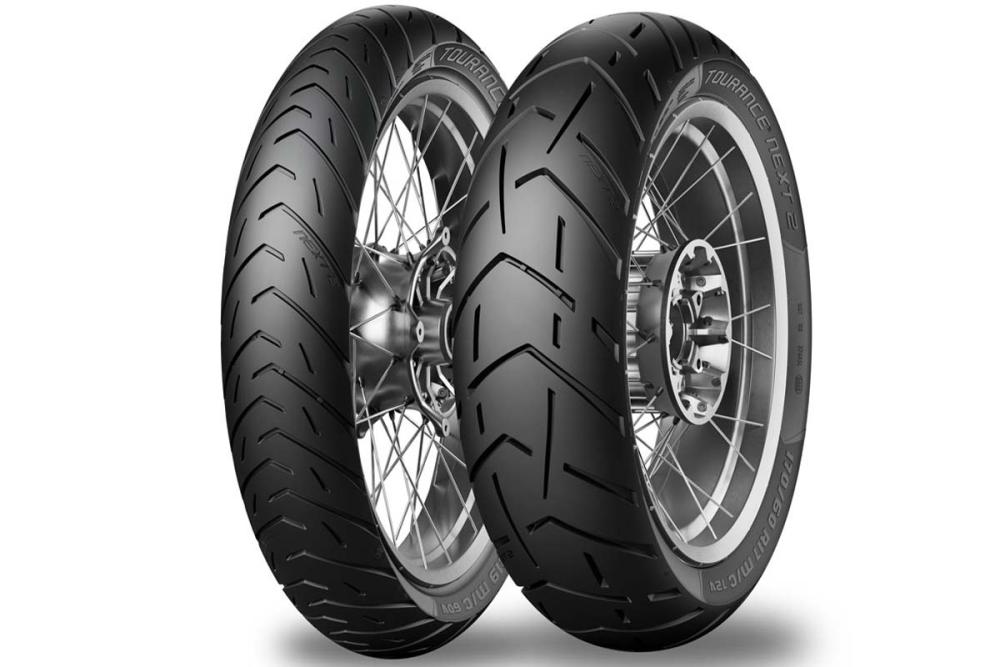
Example: Metzeler Tourance Next2, 85 % Onroad, 15 % Offroad
For occasional trips on gravel tracks, there should be a bit more negative tyre pattern to achieve a better interlocking with the ground. However, modern travel enduro tyres with a high share of positive tyre pattern also perform well on gravel tracks, as long as it does not become wet or deep.
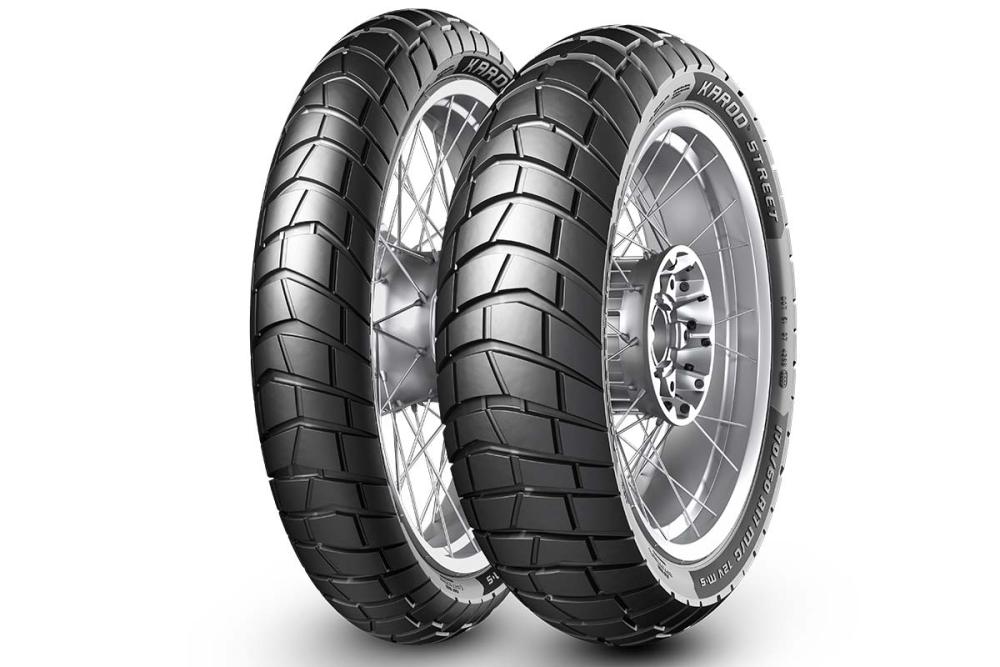
Example: Metzeler Karoo Street, 70 % Onroad, 30 % Offroad
If, however, the route includes loose terrain, i.e. sand, deep gravel, wet soil or even mud, raw lugs are definitely needed. Only a tyre with a high portion of negative tyre pattern has the necessary grip on loose terrain while at the same time retaining the necessary self-cleaning effect.
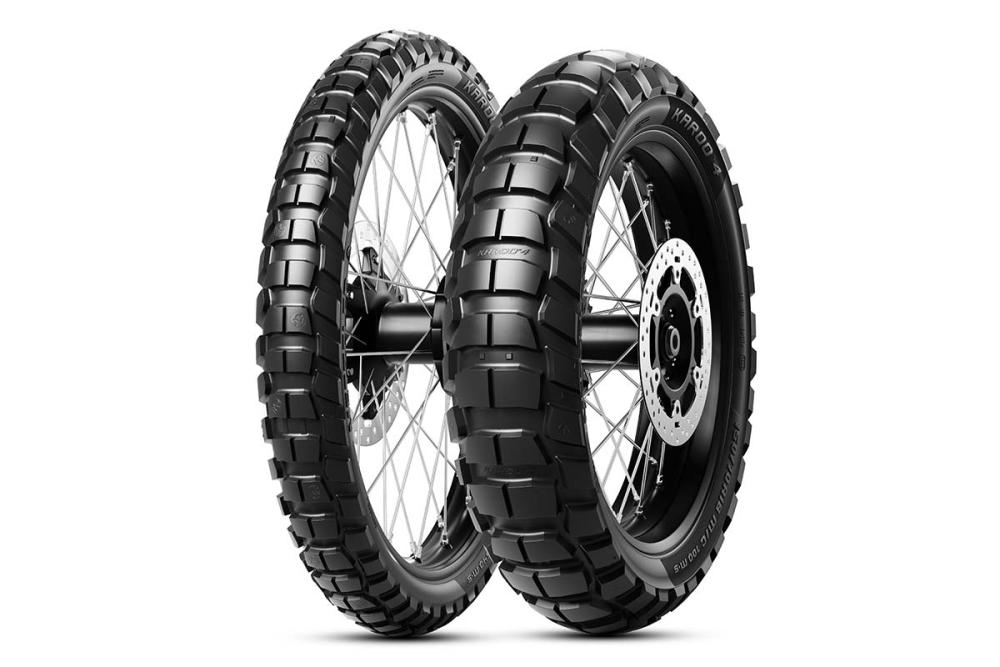
Example: Metzeler Karoo 4, 50 % Onroad, 50 % Offroad













